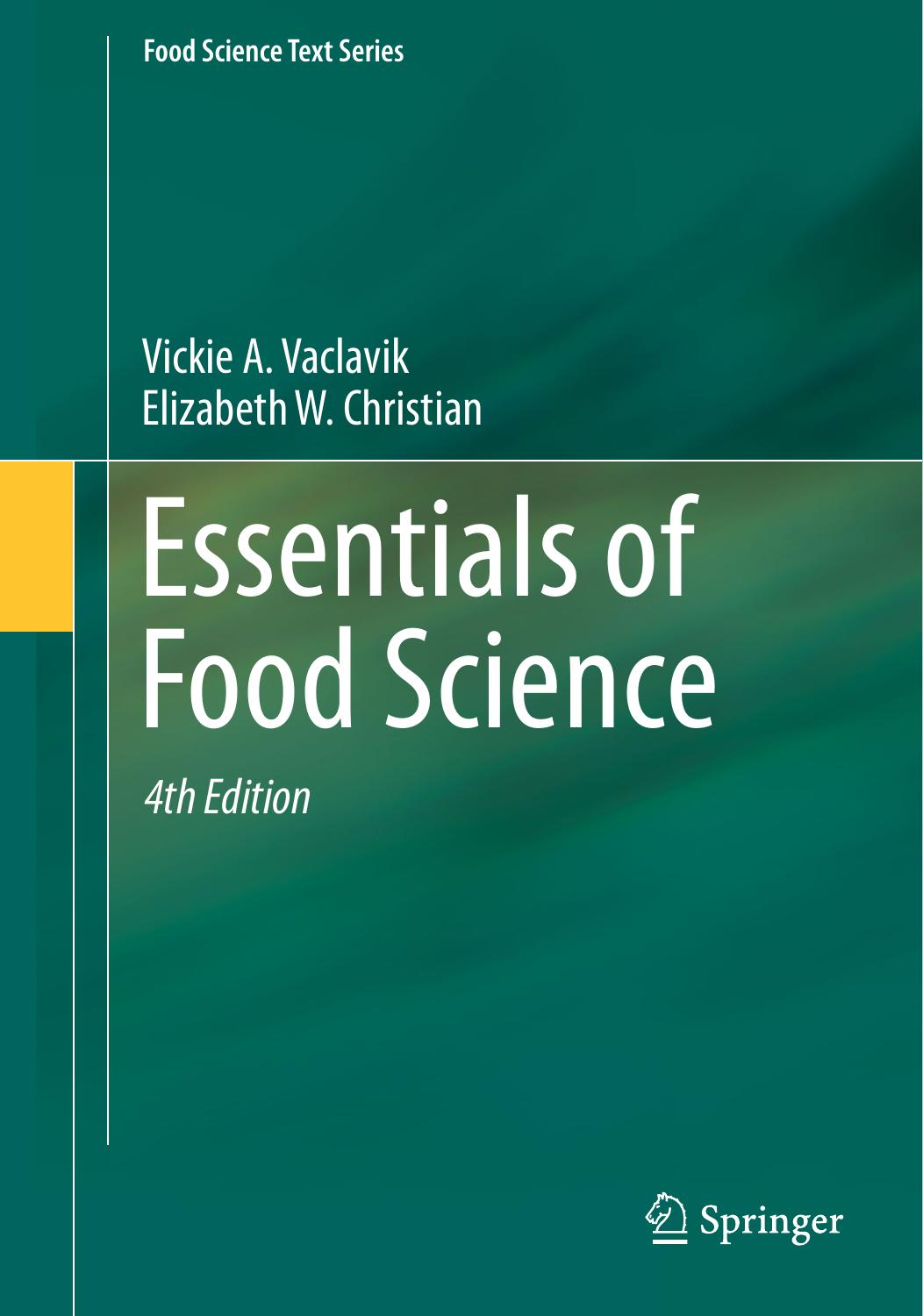Essentials of Food Science by Vickie A. Vaclavik & Elizabeth W. Christian

Author:Vickie A. Vaclavik & Elizabeth W. Christian
Language: eng
Format: epub, pdf
Publisher: Springer New York, New York, NY
Frying
Frying with melted fat or oil is a common cooking technique because frying is a rapid heat transfer method that achieves a higher temperature than boiling or dry heat temperature. The characteristics of fats for frying include that the fat must be colorless, odorless, and bland and have a high smoke point.
Smoke Point
The smoke point is the temperature at which fat may be heated before continuous puffs of blue smoke come from the surface of the fat under controlled conditions. The presence of smoke indicates that free glycerol has been further hydrolyzed to yield acrolein, a mucous membrane irritant. Monoglycerides, in hydrogenated shortenings, and diglycerides are hydrolyzed more easily than triglycerides and they tend to have a low smoke point. Therefore, they are not recommended in frying oils.
When fat exceeds the smoke point, it may reach flash point, when small flames of fire begin in the oil. Subsequently, it reaches the fire point where a fire is sustained in the oil. Oils such as cottonseed or peanut oil have a high smoke point of 444 or 446 °F (229 or 230 °C), respectively. Other oils with a lower smoking point may not perform satisfactorily when exposed, for example, to the high heat of a wok.
CULINARY ALERT!
Lard, butter, margarine, and animal fats have a low smoke point and less tolerance of heat when compared to hydrogenated fat and oils.
Download
Essentials of Food Science by Vickie A. Vaclavik & Elizabeth W. Christian.pdf
This site does not store any files on its server. We only index and link to content provided by other sites. Please contact the content providers to delete copyright contents if any and email us, we'll remove relevant links or contents immediately.
Craft Beer for the Homebrewer by Michael Agnew(18146)
Marijuana Grower's Handbook by Ed Rosenthal(3624)
Barkskins by Annie Proulx(3314)
Project Animal Farm: An Accidental Journey into the Secret World of Farming and the Truth About Our Food by Sonia Faruqi(3179)
The Plant Messiah by Carlos Magdalena(2884)
Red Famine: Stalin's War on Ukraine by Anne Applebaum(2874)
0041152001443424520 .pdf by Unknown(2787)
Organic Mushroom Farming and Mycoremediation by Tradd Cotter(2631)
In the Woods by Tana French(2535)
Beer is proof God loves us by Charles W. Bamforth(2378)
7-14 Days by Noah Waters(2362)
Reservoir 13 by Jon McGregor(2244)
Borders by unknow(2232)
Meathooked by Marta Zaraska(2222)
The Art of Making Gelato by Morgan Morano(2218)
Birds, Beasts and Relatives by Gerald Durrell(2179)
Between Two Fires by Christopher Buehlman(2174)
The 7 Habits of Highly Effective People: Powerful Lessons in Personal Change (25th Anniversary Edition) by Covey Stephen R(2141)
The Lean Farm Guide to Growing Vegetables: More In-Depth Lean Techniques for Efficient Organic Production by Ben Hartman(2099)
